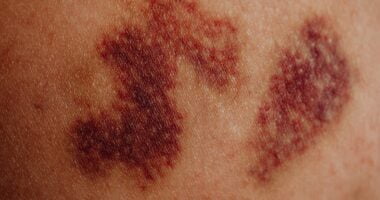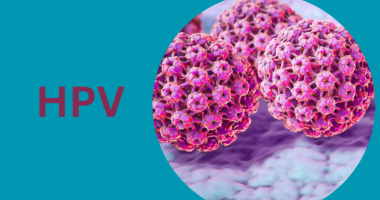Get to know How to use SAD Lamp the right way and work duration – Seasonal Affective Disorder (SAD) is a type of depression that is related to changes in seasons. It is most commonly experienced in the fall and winter months, and symptoms often resolve during the spring and summer months.
Light therapy has been a mainstay for treating winter-pattern SAD since the 1980s. It aims to expose people with SAD to a bright light to make up for the diminished natural sunlight in darker months. For this treatment, the person sits in front of a very bright light box (10,000 lux) every day for about 30−45 minutes, usually first thing in the morning, from fall to spring.
There are two types of SAD: Fall-onset, also called “winter depression,” and Spring-onset, also called “summer depression.” Symptoms of depression begin in the late fall to early winter months for Fall-onset and in late spring to early summer for Spring-onset. The treatments for winter depression and summer depression often differ, and may include any, or a combination, of the following: exposure to sunlight, light therapy, psychotherapy, and antidepressants.
Understanding SAD Lamps: How Does a SAD Lamp Work?
SAD lamps, also known as light therapy lamps or light boxes, are used to treat Seasonal Affective Disorder (SAD) and other types of depression. They work by exposing individuals to bright light, which simulates the sunlight that is reduced during the darker winter months. The light intensity is measured in lux, and the recommended intensity for a SAD lamp is usually 10,000 lux. Research has shown that light therapy has a positive effect on SAD and major depression, with strong light intensity (6,000-10,000 lux) having a greater effect than lower intensities. The duration of light therapy sessions typically ranges from 20 minutes to 3 hours, and the treatment may take a few days to a couple of weeks to show improvement in symptoms. Light therapy is generally safe and well-tolerated, with rare and mild side effects such as agitation, headaches, or eye strain. It’s important to use a light box that is medically approved for the treatment of SAD and to follow the manufacturer’s instructions regarding light intensity and recommended length of time for use. Light therapy is not a cure, but it has been shown to help reduce symptoms associated with depression, such as lack of energy, trouble sleeping, and anxiety. It’s important to consult a healthcare provider before starting light therapy to determine the most suitable treatment option based on the nature and severity of the symptoms.
Using a SAD Lamp: Step-by-Step Guide
Here is a step-by-step guide for using a SAD lamp based on the provided search results:
Finding the Right Time for Light Therapy:
- Light therapy is most effective when started early in the morning, within an hour of waking.
- For some people, early evening light exposure can also be beneficial.
- It’s important to develop a light therapy schedule and be consistent, starting early in the fall when sunlight becomes less regular.
Setting Up Your SAD Lamp:
- Position the lamp at arm’s length (about 50cm/20in) with the plastic screen angled towards your face.
- The lamp should be placed at eye level or higher, and angled slightly to avoid direct eye contact with the light.
Positioning and Distance:
- Start by positioning your SAD lamp at eye level or higher, and angling it slightly rather than having it face-on.
- The recommended distance from the lamp is typically around 16 inches to 2 feet, depending on the light intensity.
Duration of Light Therapy Sessions:
- The recommended duration for light therapy sessions is usually 20-30 minutes, but this can vary based on the distance from the lamp and the light intensity received.
Best Practices for Using a SAD Lamp:
- Use the lamp consistently at the same time every day, especially from early autumn to mid-winter.
- Monitor your mood after each usage to assess the effectiveness of the light therapy.
It’s important to follow the manufacturer’s instructions and consult a healthcare professional, especially if you have any underlying health conditions or are taking medication.
How Long Does it Take for Light Therapy to Work?
The time it takes for light therapy to work can vary from person to person. Here are the short-term and long-term effects, as well as tips for managing expectations based on the provided search results:
Short-Term Effects: Most people notice an improvement in their symptoms within a week or so of starting light therapy. It usually takes a few days for symptoms to improve, but it could take a couple of weeks
Long-Term Effects: Light therapy is not a cure, but it has been shown to help reduce symptoms associated with depression, such as lack of energy, trouble sleeping, and anxiety. Some people with SAD find that light therapy can help improve their mood considerably.
Managing Expectations: It’s important to keep track of how you are feeling and how long you use light therapy each day, and communicate with your doctor so that treatment can be adjusted as needed.
If symptoms of depression, decreased energy, and poor sleep persist despite using light therapy, it’s important to reach out to a physician or a mental health expert to determine if additional interventions may be necessary.
Research Evidence for the effectiveness of SAD lamps
There is research evidence that supports the effectiveness of SAD lamps for the treatment of Seasonal Affective Disorder (SAD) and other types of depression. Several meta-analyses have shown that light therapy has a positive effect on SAD and major depression, with strong light intensity (6,000-10,000 lux) having a greater effect than lower intensities. A 1999 meta-analysis of 39 scientific papers found that strong light intensity had a greater effect than dim lighting (less than 600 lux) on depressive symptoms in people with SAD. A 2019 meta-analysis of 19 studies also found that brighter light (greater than 1,000 lux) is needed to treat SAD. Light therapy is generally safe and well-tolerated, with rare and mild side effects such as agitation, headaches, or eye strain. However, it’s important to follow the manufacturer’s instructions and consult a healthcare professional, especially if you have any underlying health conditions or are taking medication. Light therapy is not a cure, but it has been shown to help reduce symptoms associated with depression, such as lack of energy, trouble sleeping, and anxiety. It’s important to monitor your mood after each usage to assess the effectiveness of the light therapy and to consult a healthcare professional to determine the most suitable treatment option based on the nature and severity of the symptoms.
How do I know am suffering from SAD?
If you are experiencing symptoms of depression that occur repetitively at a particular time of year, such as in the autumn or winter months, you may be suffering from Seasonal Affective Disorder (SAD). The symptoms of SAD are similar to those of normal depression, but they occur repetitively at a particular time of year. The common symptoms of SAD include increased sleep and daytime drowsiness, loss of interest and pleasure in activities formerly enjoyed, social withdrawal and increased sensitivity to rejection, irritability, and anxiety, feelings of guilt and hopelessness, fatigue, or low energy level, decreased sex drive, decreased ability to focus or concentrate, trouble thinking clearly, increased appetite, especially for sweets and carbohydrates, weight gain, and physical problems, such as headaches. To diagnose SAD, a healthcare provider will perform a careful mental health exam and medical history. Treatment options for SAD include exposure to sunlight, light therapy, psychotherapy, and antidepressants. If you think you might have SAD and you’re finding it difficult to cope, you should see a healthcare provider as soon as possible.
Risk Factors
It is estimated that approximately 1 in 20 people in the UK have been diagnosed with Seasonal Affective Disorder (SAD). Men are more likely to be diagnosed with SAD than women, and those aged 16 to 24 and 25 to 35 are over three times as likely to have been diagnosed with SAD as those aged 55 and over. The prevalence of SAD ranges from 1.5% to 9%, depending on latitude. Possible risk factors include family history, female sex, living at a more northern latitude, and young adulthood (18 to 30 years of age). The symptoms of SAD include increased sleep and daytime drowsiness, loss of interest and pleasure in activities formerly enjoyed, social withdrawal and increased sensitivity to rejection, irritability and anxiety, feelings of guilt and hopelessness, fatigue, or low energy level, decreased sex drive, decreased ability to focus or concentrate, trouble thinking clearly, increased appetite, especially for sweets and carbohydrates, weight gain, and physical problems, such as headaches. If you think you might have SAD and you’re finding it difficult to cope, you should see a healthcare provider as soon as possible.
Are there any Supplements I can Take to Deal with Symptoms?
Several supplements have been suggested by experts, including NHS to help alleviate symptoms of Seasonal Affective Disorder (SAD). These include:
Vitamin D: Vitamin D is essential for mood management, and its levels drop during the winter due to decreased sun exposure. Some studies suggest that vitamin D supplementation may help relieve SAD symptoms, especially in individuals with below-normal levels.
St. John’s Wort: This herbal supplement is often marketed as a treatment for depression, anxiety, and sleep issues. While it’s not well studied, some research suggests that it may help alleviate symptoms of depression.
Melatonin: Melatonin is a hormone that helps balance sleep/wake cycles and mood. It is synthesized from the amino acid tryptophan by the pineal gland in the brain. Melatonin supplementation may help regulate sleep patterns, which can be disrupted in individuals with SAD.
Omega-3 Fatty Acids: Omega-3 fatty acids, found in fatty fish and certain nuts and seeds, have been associated with a reduced risk of depression. Some studies suggest that omega-3 supplementation may help alleviate symptoms of SAD.
B Vitamins: B vitamins, particularly B6, B9 (folate), and B12, play a role in mood regulation and the production of neurotransmitters. Folate deficiency has been associated with an increased risk of depression, including SAD. Eating a diet rich in B vitamins or taking supplements may help alleviate symptoms of SAD.
It’s important to note that while these supplements may be beneficial for some individuals, they can interact with medications and cause side effects.









